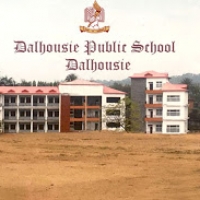Where is Dalhousie Public School ?
Dalhousie Public School is Located in Pathankot , Punjab, India
Address of Dalhousie Public School, Pathankot
Pathankot
Gurdaspur
Punjab-145001
+91-9356583201
+91-9463573138
+91-9463503229
badhani@yahoo.com.
How do I contact Dalhousie Public School?
Call at +91-9356583201 to contact Dalhousie Public School
About Dalhousie Public School
Sh. M.S.Grewal the eminent boarding school specialist, after contributing to various boarding schools, founded Dalhousie Public School at Dalhousie, India. When he found his vision being diluted, he quit active involvement at Dalhousie and moved on. He handed the baton this time, to his son P.S.GREWAL Helped by his revered BEEJI and wife RUPAM GREWAL, PS created what is today this magnificent institution. The spirit and vision of Dalhousie Public School came with the founder to BADHANI - India. Whatever a boarding school of today should be, exists at BADHANI.
Due to its location, Pathankot serves as a travel hub for these three northerly states Pathankot has a municipal corporation Pathankot is the 6th most populous city of Punjab, after Ludhiana, Amritsar, Jalandhar, Patiala and Bhatinda The city is divided into 50 wards Situated in the picturesque foothills of Kangra and Dalhousie, with the river Chakki flowing close by, the city is often used as a rest-stop before heading into the mountains of Jammu and Kashmir, Dalhousie, Chamba, Kangra, Dharamshala, Mcleodganj, Jwalaji, Chintpurni and further into the Himalayas.
Pathankot also serves as an education hub for the nearby areas of Jammu & Kashmir and Himachal Pradesh Many rural students of these states come to Pathankot for education
It bordered the Balochistan and Khyber-Pakhtunkhwa regions to the west, Kashmir to the north, the Hindi Belt to the east, and Rajasthan and Sindh to the south The people of the Punjab today are called Punjabis, and their primary language is Punjabi The main religion of the Pakistani Punjab region is Islam The two main religions of the Indian Punjab region are Sikhism and Hinduism Other religious groups are Christianity, Jainism, Zoroastrianism, Buddhism, and Ravidassia.
The Punjab region was the cradle for the Indus Valley Civilisation The region had numerous migration by the Indo-Aryan peoples The land was later contested by the Persians, Indo-Greeks, Indo-Scythians, Kushans, Macedonians, Ghaznavids, Turkic, Mongols, Timurids, Mughals, Marathas, Arabs, Pashtuns, British and other peoples Historic foreign invasions mainly targeted the most productive central region of the Punjab known as the Majha region, which is also the bedrock of Punjabi culture and traditions The Punjab region is often referred to as the breadbasket in both India and Pakistan.
